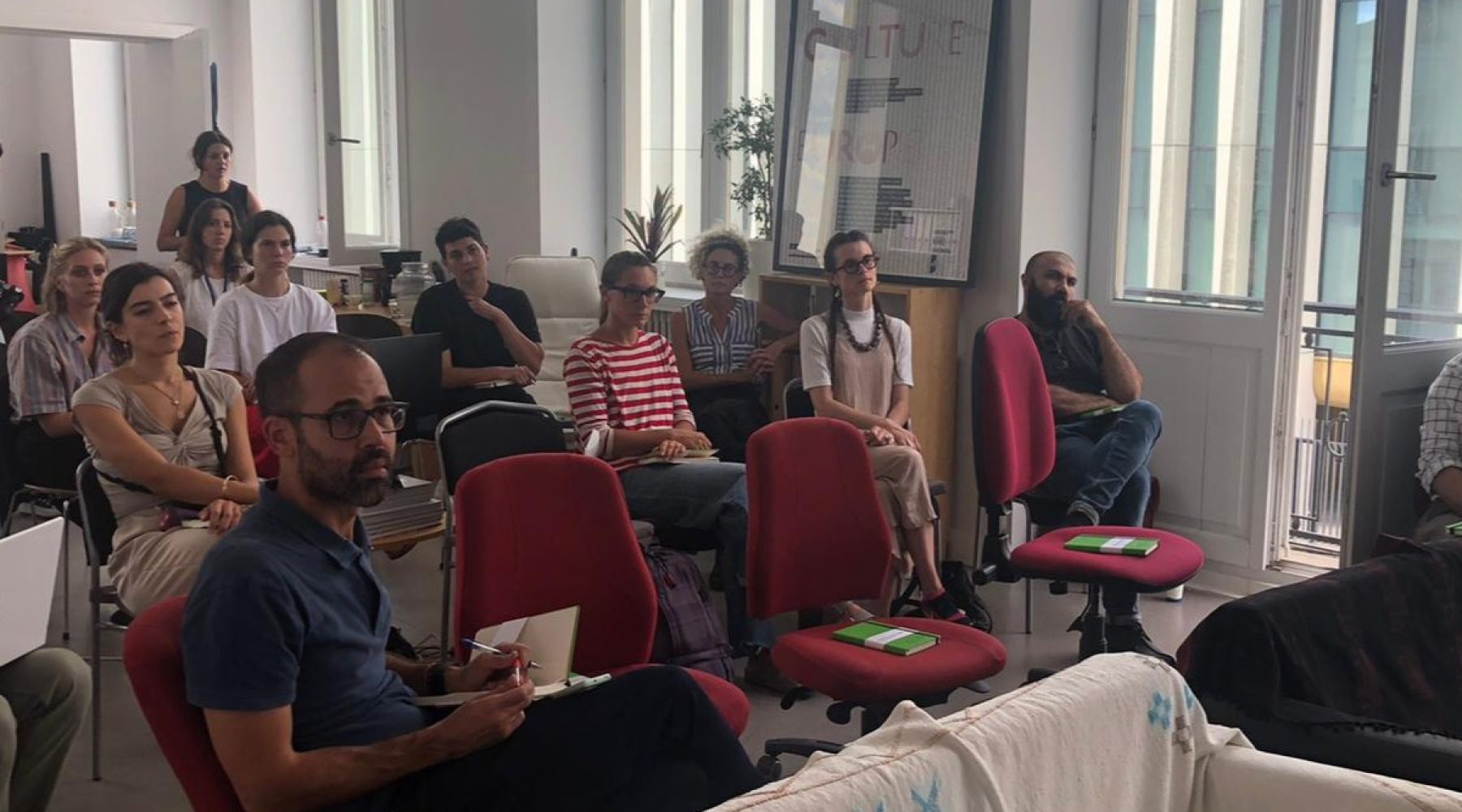During a 5-day training, 29 artists and cultural workers in the Come2Art project were trained by the COME2ART partners in order to undertake the role of the community educator and creativity ambassador. The selected artists/cultural workers were trained as trainers of the COME2ART curriculum, creativity ambassadors of the co-creativity hubs, community mentors during the design and implementation of mini artistic projects and creative placemaking projects.
The first day of the training focused on gathering and team-building between the participants as they joined for the first time in the Culture Action Europe office in Brussels. In addition to welcoming and the introduction of the participants, the project partners also provided a short presentation and discussion about COME2ART project.
At the beginning of the second day of training, participants took part in an icebreaker exercise designed to continue the networking aspect between the artists and cultural workers. Continuing the session, the partners walked through the detailed agenda for the following session of the training. AAH also presented the participants with an overview of what the project has accomplished so far in order to contextualise the involvement of the participants in a big picture. In addition to these introductory moments, MeP also gave a clear overview of the curriculum and pedagogic methodology of the training to give a better understanding of the goals of the week.
The first presentation, “Arts in times of crisis: a way to self-regulate emotions?” focused on the relationship between art and emotion as it relates to social science. The session included examples from psychology to art therapy, from aesthetics to neurobiology. This module taught that artistic practices and, more in general, creative experiences modulate emotions, influence our moods and affect our mental health. Th presentation outlined how the arts can play a role in helping people manage their stress in many contexts and different ways, especially in light of the level of disruption and uncertainty triggered by the 2020 global health crisis and the huge impact on stress responses and the capacity to regulate emotions, thoughts and behaviours, especially in young people. The session to provided participants with contents and tools to recognize and manage their own as well as others’ emotions, as the preliminary activity to develop life skills and resilience by engaging in collective artistic practices.
The second session of the day focused on “Creativity in practice: methods and tools for collective artistic expression.” This presentation explored how the relationship between individual artmaking can be put in dialogue with others’ work, thereby mutually acknowledging, enhancing and synthesising ideas, approaches and outcomes in collective art practice. It offered basic methodological tools and foster competencies that are essential for such collective approaches in artistic expression.
The last session of the day was, “Digital tools for creative expression,” which provided participants with an overview of available digital tools for creative expression. This included methods, examples of best practices and basic theoretical background on the uses of simple and affordable digital tools to foster creative expression that participants can use with their community.
The third day of the training began with the session, “Collaborate with others in artistic projects, promoting collective efforts and shared understanding.” The presentation focused on the basics notions of collaboration, starting from a reflection on Empathy and active listening. It also provided frameworks and tools that the participants can use and apply with the community members to upskill their collaboration competence and improve their meetings online and offline.
The second session was “Let’s make public art: introducing creative placemaking as a tool for creating a resilient community.” This session got the heart of creative placemaking as a way to us public space as a canvas of artistic expression, building partnerships across local sectors, addressing community issues and challenges and aiming on economic, and creating physical and social change. Lastly, the participants were introduced to the digital platform on which the trainings would be made available for their own training sessions in community.
The sessions of the fourth day of the training was split into two parts and presented by participants from the IoDeposito team. The whole day focused on “The social role of artist as a leader in sustaining creative activities at community level.” In the first part, one participant focused on relational art and gave a presentation about approaches towards community. This involved explaining a bit of theory of relational art and highlighted the objectives that the participants must achieve to become therapeutic towards the community. The second part of the session focused on the artist as a “heterotypical space,” which focused mainly on understanding the role that the participant can play in the community in building a space and atmosphere conducive for creation.
The fifth day of the training began with a session focusing on promoting civic engagement through arts-based community revitalization initiatives. This helped participants deepen into the importance of community-led initiatives as platforms of social change by setting criteria and characteristics of these stakeholders that have to be engaged in all processes. After this session, the project had the opportunity to hear from a special guest, Bram de Wolf, from the Brussels-based organization, Urban Foxes. He shared how his organization is working across Europe to develop creative placemaking project for social change.

